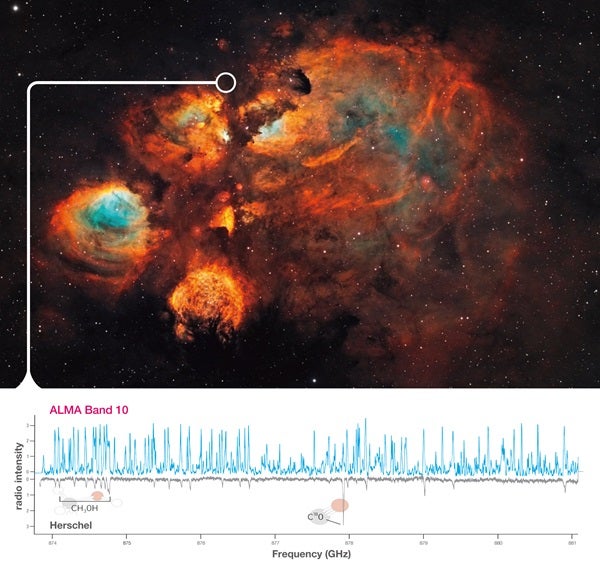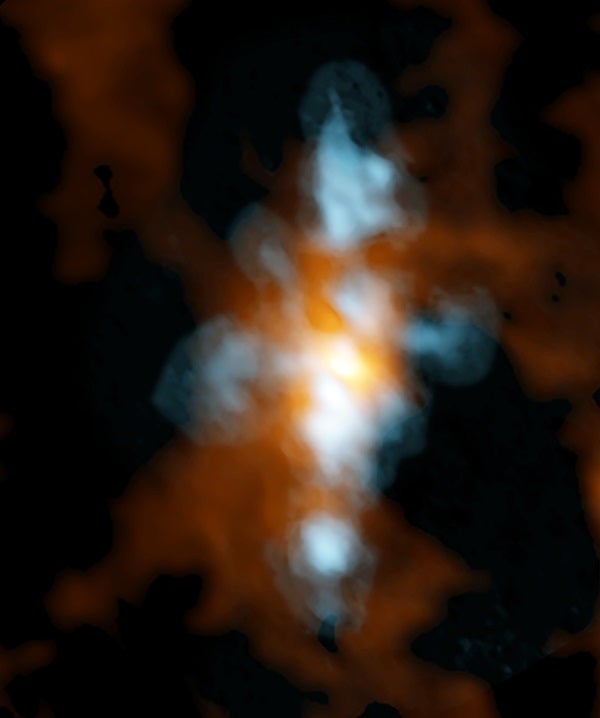Spotting young stars
On November 22, ALMA released its first scientific results with Band 10, collecting 695 emission lines — the fingerprints of vibrating molecules energized by starlight — from molecules in the Cat’s Paw Nebula. The results were published August 17 in The Astrophysical Journal Letters, and are also available on the arXiv preprint server. These molecules include methanol, ethanol, methylamine (a derivative of ammonia), and glycolaldehyde (a simple sugar-related molecule). The Cat’s Paw is located about 4,300 light-years away, and is currently forming massive stars. Previous observations at this same radio frequency, made by the European Space Agency’s Herschel Space Observatory, detected only 65 emission lines — 10 times fewer than ALMA saw — demonstrating ALMA’s immense observing power, especially in a wavelength region not normally observable from the ground. “[These observations] require the extreme precision and sensitivity of ALMA, along with some of the driest and most stable atmospheric conditions that can be found on Earth,” said lead author Brett McGuire of the National Radio Astronomy Observatory in a press release.
Building Band 10
Band 10 is ALMA’s highest-frequency receiver band, capable of catching signals between 787 and 950 GHz. It was developed by the National Astronomical Observatory of Japan (NAOJ), which also developed ALMA’s Band 4 (125–163 GHz) and Band 8 (385–500 GHz). However, unlike ALMA’s other bands, these particular receivers were more challenging to construct. Because of the wavelengths they observe, the Band 10 receivers could not utilize superconducting components built with Niobium, which is traditionally used in such equipment. Instead, the development team used niobium-titanium nitrides (NbTiN) to create the components in Band 10. The receivers were completed in 2014, and installed in ALMA for use in normal science operations in 2015.












